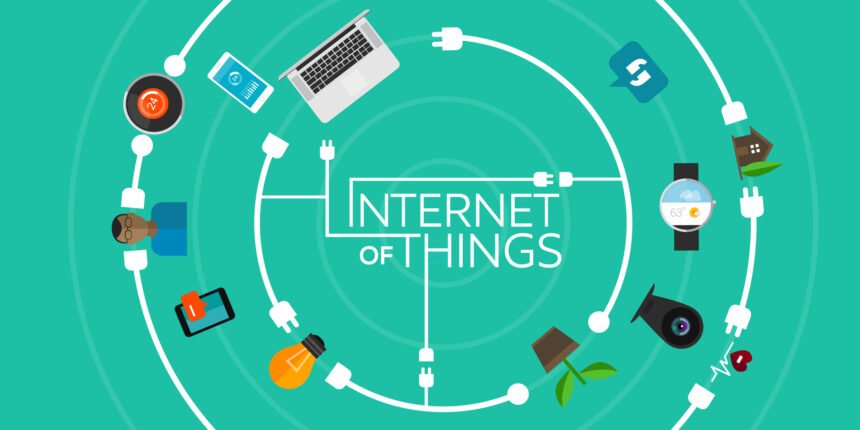IoT plays a significant role in information technology, yet the pace of deployments has outpaced the awareness of compliance issues. IT professionals must work hard to stay ahead of the curve, especially if they plan to integrate IoT in various facets of their operations. Compliance requirements vary across industries. However, every organization should at least apply compliance to some aspects of its operations. So, here’s how to make sure your IoT systems stay compliant.
1. Cyber Security for IoT
More than 24 billion active IoT devices exist today, and billions more will be available in the coming years. As individuals, we love how these devices make our lives easier and more enjoyable. It allows us to get real-time information and stay in touch with friends and family. Meanwhile, companies love IoT devices since they use them to connect with consumers and gather information for their benefit. Unfortunately, cybercriminals take advantage of these and use IoT devices to execute crimes. One of the main issues with IoT devices is that they make it possible for some individuals to hack and perform malicious activities that could interfere with company operations.
Sometimes, developers could make mistakes when creating IoT hardware and software, which could put the organization at risk of cybersecurity threats. For instance, inadequate default settings could result in having default passwords that can’t be changed. Sometimes, it can be impossible to update firmware, and this could affect healthy IoT networks. Another common cybersecurity threat is using inappropriate technology. There are instances when organizations integrate powerful software into an IoT device even though it’s not necessary. When this device is compromised, cyber attackers will have a powerful weapon to attack the organization’s computer system.
Thankfully, you can recruit IoT specialists to improve security in IoT devices. The first is to enhance their monitoring of these devices using tools like SIEM or security information and event management systems. Another tool they can use is the IDS or intrusion detection systems. These tools allow them to profile attackers and effectively integrate security controls into these IoT devices. Adding security features, such as functionality to encrypt stored data is another way to improve cybersecurity. In addition, workers should learn how to identify IoT traffic, allowing for the easy management and control of these devices. This also makes it easier for them to address any security breaches.
2. GDPR Compliance for IoT
Organizations integrating IoT in their daily operations have access to various resources that can help them improve their customer reach by gathering more personal data. While IoT has helped transform businesses, making them more efficient, it also poses risks to the organization due to security breaches and data protection. Every organization that uses IoT in its operations must be aware of GDPR and its importance.
The legislation on data protection states that personal data is handled in a way that utmost security is applied. It is the organization’s responsibility to implement security measures for the IoT technologies they use. More importantly, they must ensure these technologies are GDPR compliant if they use them in collecting personal data. GDPR should apply to the entire organization’s supply chain, including IoT, so it makes sense to raise awareness of data collection to everyone in the organization, from employees to partners and customers. They must detail the type of data they collect, the means of collecting and why they must gather such data. In addition, customers should be aware of how the organization can protect them against data breaches.
To ensure that your IoT system remains GDR compliant, any organization integrating IoT devices must be aware of the type of data they gather. They must know if the information is personal data and should know where the data is kept, how it is protected, and what they must do in case of a security breach. Furthermore, businesses must record their data processing activities to ensure they can provide proof of action if they get investigated for a possible data breach. Since IoT devices are highly vulnerable to cyber threats, changing log-in credentials and regularly updating the devices’ firmware is essential in mitigating the risk of data breaches.
3. General IoT compliance
IoT is an innovative technology that offers various applications that significantly improve business operations. Unfortunately, it also comes with numerous challenges. IT professionals have been looking for ways to improve their organization’s operations by integrating IoT, but they must also recognize its associated risks. One of the ways to minimize risks is to develop your business compliance process. Organizations must also be aware of the existing IoT compliance and how they can comply.
Numerous standards apply to IoT connectivity. One of the basics includes using Internet Protocol (IP) with IPv6. Any device that connects to the internet must comply with these standards. In most cases, IT professionals are not concerned about complying with these standards since most inventories integrate IP properly. But there are growing cybersecurity threats every day. As such, security standards and protocols must be taken into consideration when using the internet.
A lot of times, compliance with IoT standards and protocols is automatic. But that’s not the case for all since it will depend upon the standards integrated into the device. The use of IoT is always about data. Therefore, when it comes to compliance, organizations must also consider where personal data is used.
As the IoT is part of a bigger data reality, given the many processes involved, it must be approached more holistically, just like with all GDPR strategies. In some cases, implementing compliance may require appointing a data protection officer.
Once you understand where the personal data comes into okay, take a closer look at your IoT project. Numerous components can pose a security risk in IoT and are not often understood well enough by IT professionals. There should be no room for assumptions when it comes to ensuring your IoT systems stay compliant. IoT is varied, and not all organizations leveraging it fully understand its security aspects.









